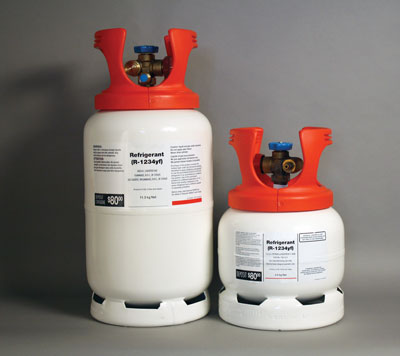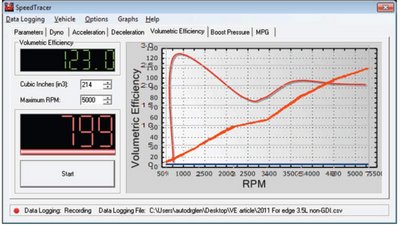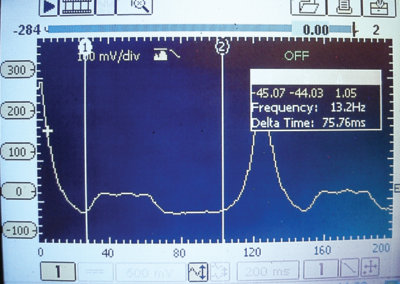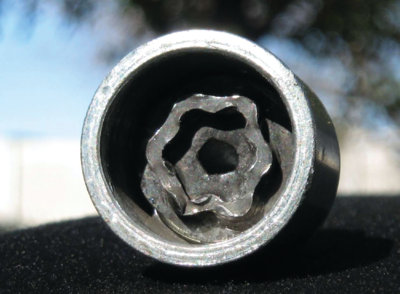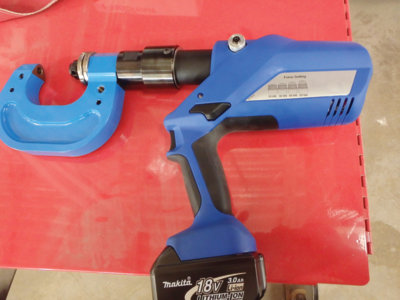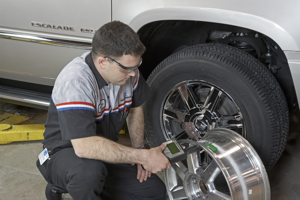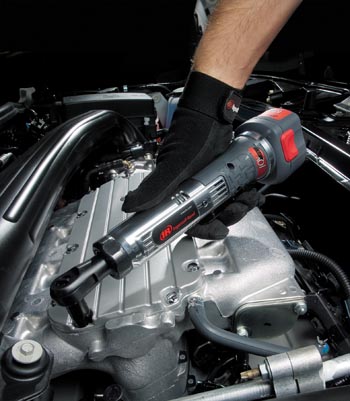 Ingersoll Rand now delivers the best in cordless ratchets with the release of the R140 1/4" mini, R145 3/8" mini, R380 3/8" standard class and R385 1/2" standard class cordless ratchets.
Ingersoll Rand now delivers the best in cordless ratchets with the release of the R140 1/4" mini, R145 3/8" mini, R380 3/8" standard class and R385 1/2" standard class cordless ratchets.
Designed and engineered for automotive and maintenance professionals, the new cordless ratchets add to the growing family of recently unveiled IQV Series cordless tools. The IQV Series now includes 19 different tool models, 6 battery models, a universal battery charger, battery analyzer and a full line of accessories.
“Our goal was to design a line of cordless ratchets that was every bit as durable and powerful as the pneumatic ones our customer have been depending on for years,” said Christian Corrigan, cordless tools global marketing manager for Ingersoll Rand. “We have succeeded in reaching that goal, and are confident that our IQV Series ratchets will not only exceed our customers’ expectations for cordless ratchets, but even exceed their expectations for pneumatic ratchets.”
Like the rest of the IQV Series, the ratchets provide impressive power and strength. With solid aluminum main housings, these ratchets stand up to the manual cranking strength needed from a ratchet. Maximum torque even beats competitive pneumatic models, with the R140 and R145 delivering a maximum torque of 25 foot-pounds and the R380 and R385 providing 70 foot-pounds.
The ratchets’ variable-speed triggers provide the operator with maximum control while onboard microprocessor-controlled protection continuously monitors tool operation to prolong motor life and improve battery run time.
These ratchets feature the patent-pending IQV Grip, a twist-to-lock battery interface that eliminates typical damage to battery mounts and clips by locking the battery securely in place. A metal housing ring wraps around the handle, protecting the battery stem and housing in case the tool is inadvertently dropped. Additionally, the ratchets proprietary aluminum and composite housing protects the tool against harsh fluids common in automotive and industrial environments. The ratchets are compatible with either IQV 7.2-volt or 14.4-volt batteries depending on the model, and all are compatible with both lithium-ion and nickel-cadmium batteries.
To complement their revolutionary technology and robust engineering, Ingersoll Rand backs the IQV Series ratchets with the applicable IQV warranty with registration. This includes a one-year, hassle-free tool and charger replacement and a two-year or 1,000 charges limited battery warranty.
For further details on the Ingersoll Rand IQV Series cordless ratchets, see your local tool professional, call (800) 376-TOOL or visit irtools.com.


